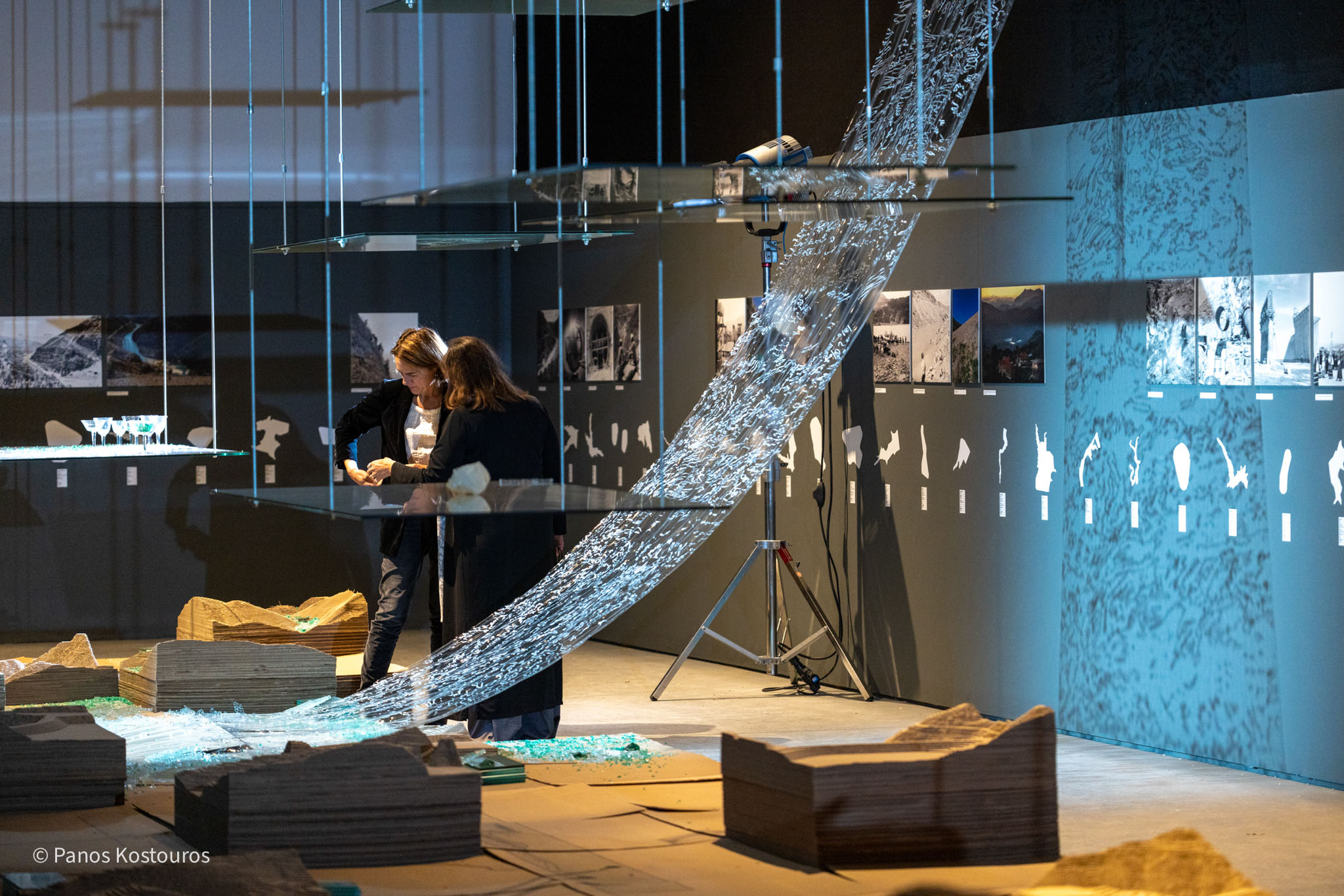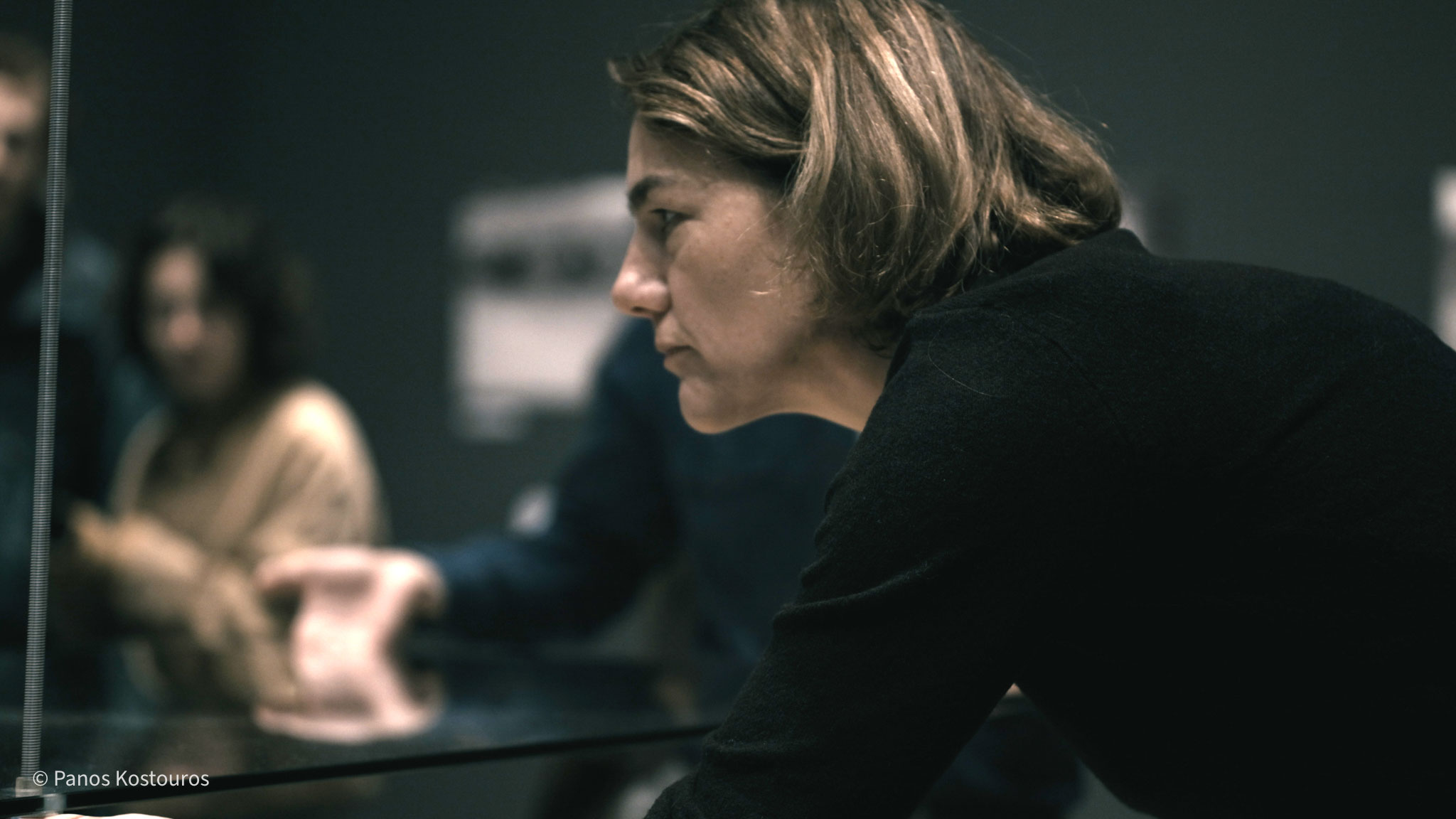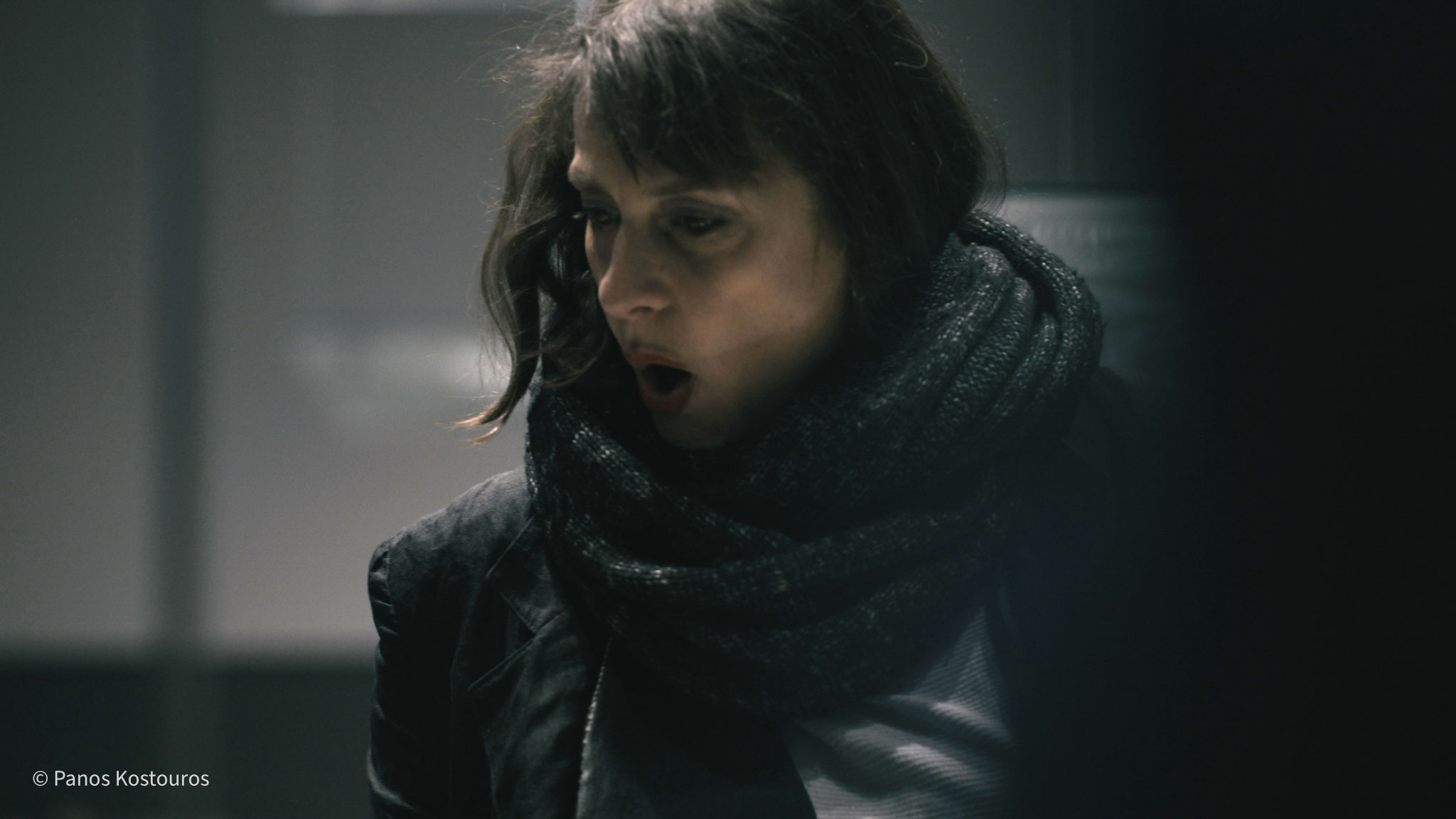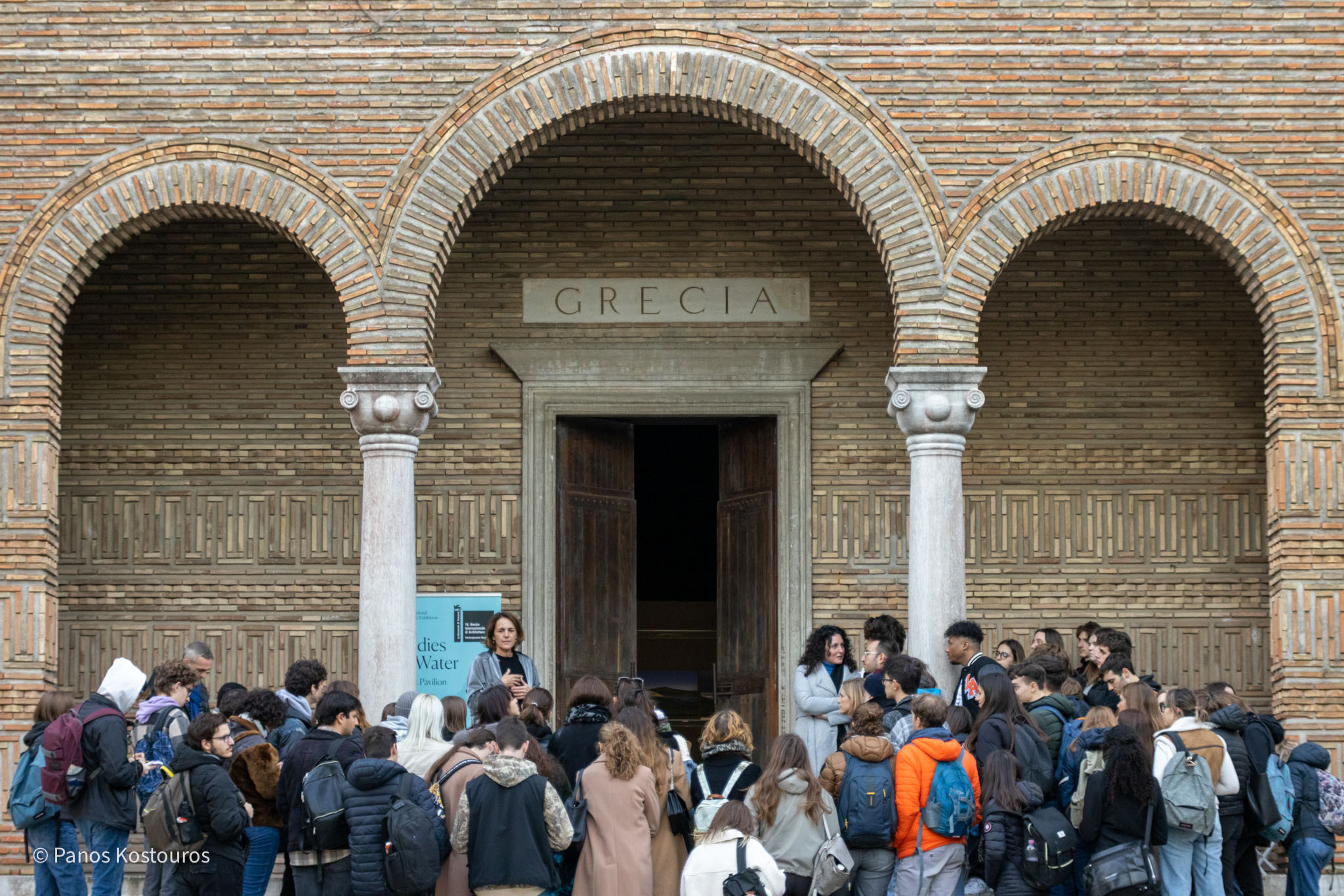Performative Art Echoes Recent Mediterranean Floods at the 18th Architecture Biennale in Venice

Between November 16th – 26th, following the invitation of curators Costis Paniyiris and Andreas Nikolovgenis, awarded artists Christina Nakou and Anna Pangalou held a long performance at the Greek Pavilion of the 18th Architecture Biennale in Venice. The third stop of the ‘Transiens Nostrum’ project gradually deconstructed the ‘Bodies of Water’ exhibition dedicated to dams and reservoirs that transform the landscape of Greece.
By the end of the Biennale, the two works were fused together into a new work of art to highlight the transformative, unpredictable and ever-changing relationship between human structures and nature; a reference to the floods caused by Mediterranean Storm Daniel[1] last September. The presentation of the work at the Greek Pavilion, close to the Giardini channels, also linked the project with the condition of tide flux in Venice (Acqua Alta), highlighting the global character of climate change.
The ‘Transiens Nostrum’ circumnavigation, started with the exhibition “In Presentia” at the Bastion of St. George on the Greek island of Rhodes. Its next stop was in Syros island with the exhibition ‘Embankement’ in the old Customs Building. In the future, ‘Transiens Nostrum’ is expected to travel to other ports of the Mediterranean such as Alexandria and Marseille. Inspired by the transformative power of loss, the two artists are exploring Mediterranean ports and the stories of their people pursuing to create poetic spaces that aim at connection, collaboration and communication.
Among the exhibition objects were suspended glass surfaces with bathymetric plans of important water dams of Greece, a pedestal of recycled carton, scaled models and drawings of Greece’s water reservoirs along an archive of historic and current photographs. The theme of this year’s Biennale in Venice focused on combating climate change and titled “The Laboratory of the Future.”
“’Bodies of Water’ looked at the system of dams and reservoirs as an inverted archipelago. It inspired us to focus on the idea of submergence, in light also of the recent floods in the Mediterranean that caused enormous geographical changes forcing local inhabitants to transform their lives,” says Christina Nakou. “Venice, a port where people remain in everyday dialogue with the transformative condition of water fluctuations, offers a platform for contemplating the mutual dependence between the works of human beings and the natural environment,” she adds.
“The specific architectural space in which we present is a decisive factor in shaping our exhibition. In Venice, the space of the Greek Pavilion together with the ‘Bodies of Water’ exhibit by Paniyiris – Nikolovgenis and the soundscape by Dimitris Karageorgos became the trigger for the design of the ‘Transiens Nostrum’ installation that developed as a performance. We are interested in studying the vertical axis of the sea movement in Venice – movement that creates the tide, a phenomenon known as Acqua Alta. The space, the details and the human factor as manifested through the visitors’ reactions, are perceived as a 3-dimensional score, visually as well as through sound. The particularity of the Greek Pavilion as a space lies in its function as an exhibition space. That is to say, that it is a space constantly in transformation,” says Anna Pangalou.
On November 24th, a presentation of the collaboration in the form of a discussion between the artists and the curators took place at the Greek Pavilion. Among the guests joining the discussion were Vice-Rector of Ca’Foscari University Caterina Carpinato, professor of the Greek Language department and Carlo Santagiustina, Assistant Professor of Research Methods at the Venice School of Management for the Aqua Granda programme. Students of Trieste Architecture School visited the exhibition together with their professor Gianfranco Guaragna.
The ‘Transiens Nostrum’ performance in Venice was made possible thanks to the support of the Greek Ministry of Culture, Effetre Murano Glass and Hellenic Sea Salt. Betty’s Bread, Alexandros Gousiaris, Dirfis Mushrooms and Prekas Products supported the presentation event. Stage lighting was designed by Stephanos Drousiotis. Panos Kostouros documented the performance through video and photographs. Istorima Archive was there to record oral stories about floods in Venice, in collaboration with students of the Ca’ Foscari University.
[1] https://en.wikipedia.org/wiki/Storm_Daniel






